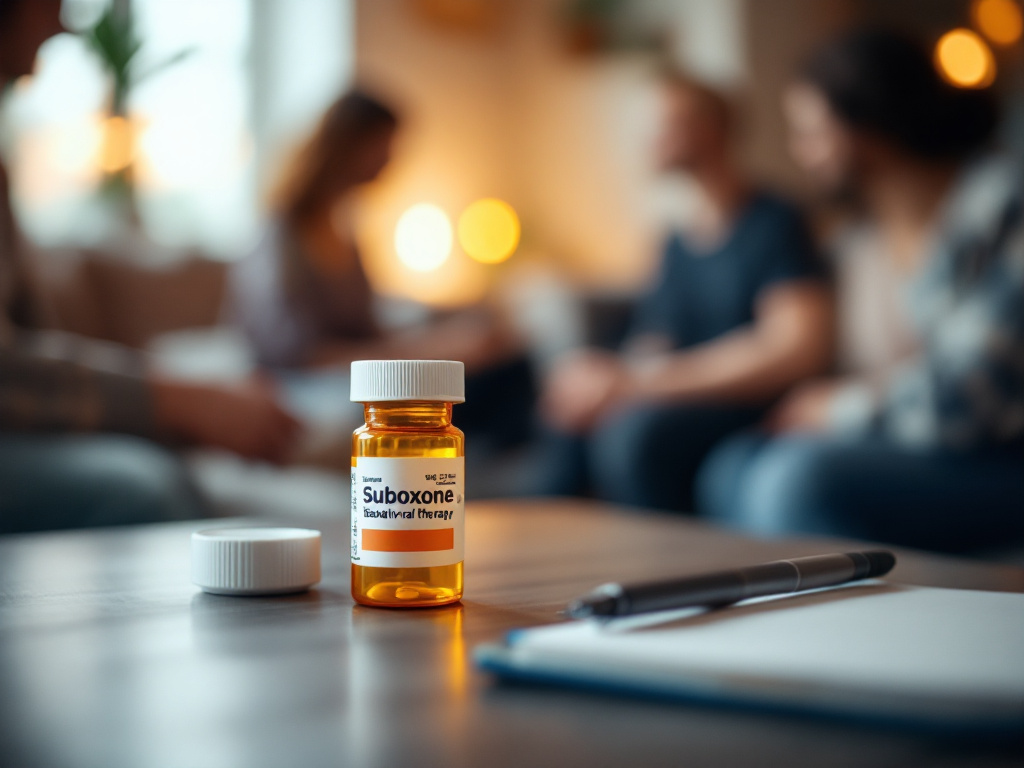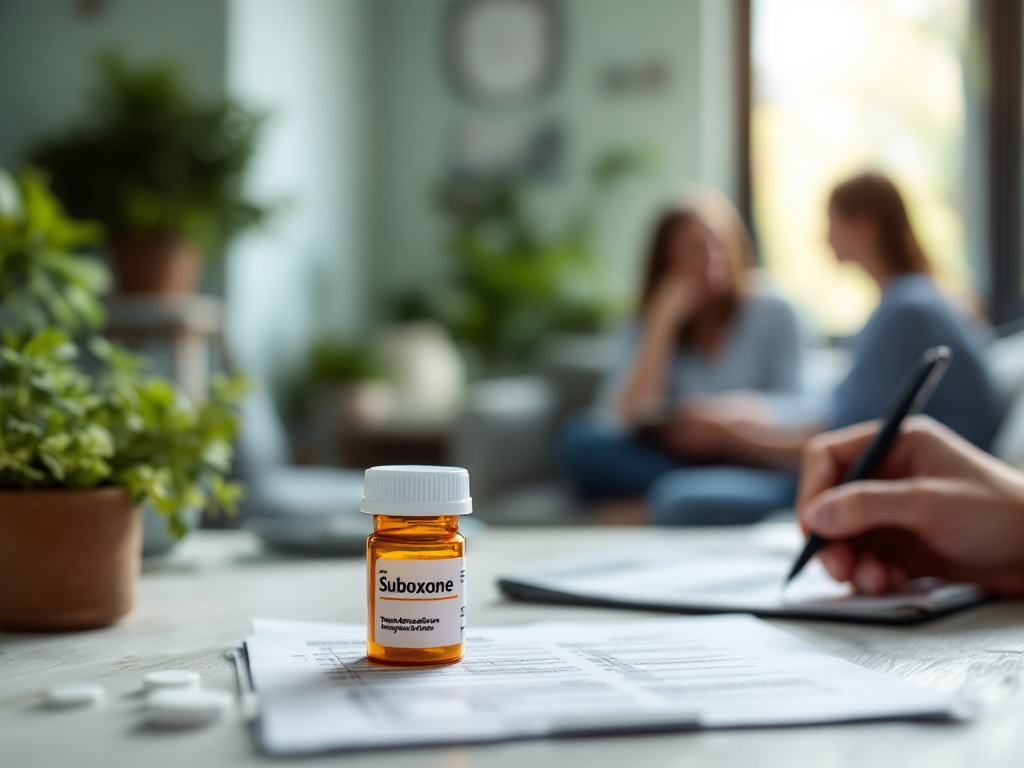If you’re exploring a suboxone and behavioral therapy program, you’re taking a critical step toward managing opioid use disorder (OUD) with a proven approach. Medication-assisted treatment, combining buprenorphine-based medication like Suboxone with structured counseling, addresses both the physical dependence and the behaviors that contribute to addiction. At Freedom Healthcare, our outpatient MAT programs provide immediate access to Suboxone treatment and same-day telehealth scheduling so you can begin your path to recovery without delay. In this article, you’ll learn how integrating medication and therapy within an outpatient setting can help you stabilize, maintain progress, and achieve lasting change.
Medication-assisted recovery overview
What is MAT
Medication-assisted treatment (MAT) combines FDA-approved medications with counseling and behavioral therapies to treat OUD. This evidence-based approach addresses both the physiological and psychological aspects of addiction, increasing the likelihood of successful outcomes [1].
Role of buprenorphine
Buprenorphine, the primary component in Suboxone, is a partial opioid agonist. It binds to opioid receptors in your brain, reducing withdrawal symptoms and cravings without producing the same level of intoxication as full agonists. By stabilizing your brain chemistry, buprenorphine helps you engage more fully in counseling and other recovery activities. You can explore our buprenorphine addiction treatment services to learn more about how this medication supports your journey.
Suboxone treatment benefits
Craving reduction and withdrawal management
Suboxone contains buprenorphine and naloxone. Buprenorphine eases withdrawal by activating receptors at a controlled level, while naloxone discourages misuse by blocking opioid effects if the medication is tampered with. This combination helps you focus on therapy instead of acute discomfort [2].
Reduced overdose risk
Clinical data show that Suboxone lowers the risk of fatal overdose by about 50 percent compared with untreated OUD [3]. Its built-in ceiling effect makes it significantly harder to overdose on Suboxone alone, though caution is still needed when combining it with other sedatives.
Suboxone component overview
| Ingredient | Action | Benefit |
|---|---|---|
| Buprenorphine | Partial opioid agonist | Stabilizes receptor activity, reduces cravings and withdrawal symptoms [4] |
| Naloxone | Opioid antagonist | Blocks opioid effects if misuse is attempted, deterring diversion and misuse |
Integrate behavioral therapy
Counseling approaches
Behavioral therapies such as cognitive behavioral therapy (CBT) and motivational interviewing help you identify triggers, develop coping skills, and build self-esteem beyond your addiction. While some studies suggest medication is the most impactful component of treatment [5], therapy provides essential strategies to prevent relapse and maintain long-term recovery.
Peer support groups
Peer support groups offer a structured environment to share experiences and reinforce skills learned in therapy. Connecting with others who face similar challenges fosters accountability and mutual encouragement, strengthening your support network [6].
Treating co-occurring disorders
Many individuals with OUD also experience depression, anxiety or post-traumatic stress disorder. Addressing these conditions concurrently—rather than sequentially—leads to better outcomes. Integrated care ensures your mental health needs are met alongside addiction treatment [6].
Design your outpatient plan
Stabilization phase
During the stabilization phase, you’ll abstain from opioids for 12–24 hours before starting Suboxone so withdrawal symptoms have begun and the medication can take effect appropriately. Your clinician will adjust your dose based on comfort and response. This initial phase often takes a few days to a week to establish your optimal dose.
Maintenance and tapering
Once stabilized, you move into maintenance, taking a consistent dose to prevent cravings and withdrawal. Over time, you may discuss gradual tapering under medical supervision. Our suboxone taper and maintenance plan outlines personalized strategies to reduce dosage safely while preserving stability.
Monitoring and follow-up
Regular follow-up appointments include assessments of your progress, urine screenings and ongoing counseling. Your individualized outpatient program ensures you receive comprehensive care in a supportive environment. Many clients transition smoothly to lower-intensity check-ins as they gain confidence and skills.
Manage insurance coverage
In-network providers
Freedom Healthcare partners with major insurers to deliver affordable care. You can locate an outpatient mat clinic accepting insurance in your network to minimize out-of-pocket costs. Our team can verify your benefits and guide you through the billing process.
Medicaid and private insurance
Suboxone therapy often qualifies for coverage under both Medicaid and private plans. If you have Medicaid, see our suboxone therapy covered by medicaid page for details on enrollment and co-pays. Private insurance holders can confirm benefits through our benefits verification service to understand any deductibles or copays.
Copay and prior authorizations
Some insurers require prior authorization for buprenorphine-based treatments. Our staff streamlines this process, submitting documentation on your behalf and tracking approvals so you can start treatment without delay.
Schedule same-day telehealth
Virtual clinic advantages
Telehealth appointments let you connect with a licensed provider from your home, office or anywhere with internet access. Our virtual suboxone medication clinic maximizes privacy and convenience, eliminating travel time and reducing stigma.
Telehealth appointment process
- Submit a brief intake form online
- Attend a video consultation with a certified provider
- Receive a secure e-prescription for Suboxone
- Arrange follow-up telehealth visits and therapy referrals
You can book a same day buprenorphine appointment to ensure rapid access to treatment when you’re ready.
Confidential care options
All telehealth sessions comply with HIPAA and 42 CFR Part 2 regulations, safeguarding your privacy and confidentiality throughout treatment.
Sustain long-term recovery
Ongoing recovery support
Maintaining sobriety requires consistent effort and support. Your suboxone recovery management plan may include periodic medication check-ins, continued behavioral therapy and peer group participation to reinforce healthy habits.
Lifestyle and wellness strategies
In addition to medication and therapy, focus on nutrition, exercise, stress management and sleep hygiene. These wellness practices support brain health and emotional resilience, helping you navigate challenges without returning to substance use.
When to seek additional help
Recovery is not always linear. If you notice increasing cravings, anxiety or behavioral changes, reach out for more intensive support—such as a higher frequency of therapy sessions or brief residential care—to prevent relapse.
By combining Suboxone medication with behavioral therapy in an outpatient setting, you gain a tailored, comprehensive care plan designed to meet your unique needs. At Freedom Healthcare, our supportive environment and immediate access to both medication and counseling ensure you receive the expert guidance necessary for lasting recovery. Take the next step by contacting us today to verify your benefits and schedule your first appointment.











